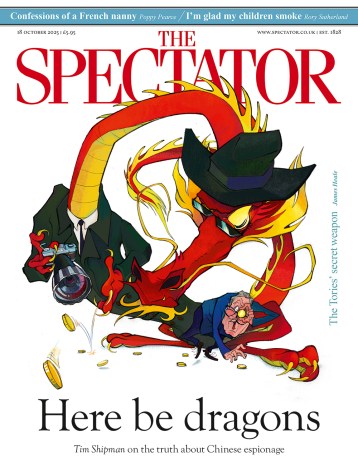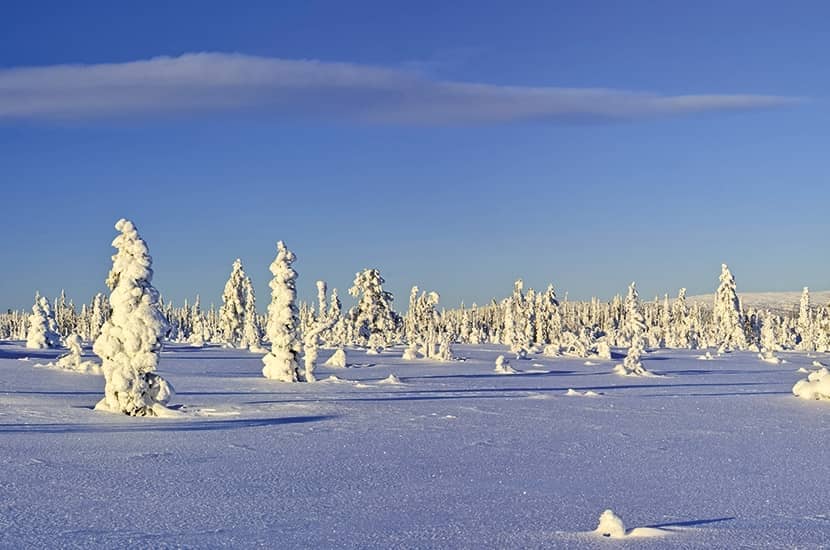Covering 20 per cent of the Earth’s surface, the boreal forest is the largest living system, or ‘biome’, on land. It contains one third of all the planet’s trees and encircles much of the northern hemisphere in a halo of green. The northernmost extent of this forest, called the treeline, marks the point beyond which it is too cold for trees to grow.
This is perhaps not where you’d expect to find Ben Rawlence, an author and journalist whose previous books have focused on humanitarian crises in Africa. But, as he explains in The Treeline, things are changing alarmingly fast in this biome: ‘The trees are on the move. They shouldn’t be. And this sinister fact has enormous consequences for all life on Earth.’
Fires sweeping through the Siberian boreal forest in 2019 burned an area larger than Austria
To tell the story of this changing natural frontier, Rawlence focuses each of his chapters on one of six tree species that dominate the treeline — Scots pine, birch, larch, spruce, poplar and rowan, or mountain ash. Each, he explains, is specially adapted to survive climate change (all bounced back after multiple Ice Ages) and together they can offer us ‘a glimpse of what, after the great transformation currently unfolding on Earth, will remain’.
With the warming climate, however, the natural cycles of these trees are being disrupted. Rawlence describes the annual fires sweeping through the Siberian boreal forest. In 2019, an area larger than Austria burned. Other changes, though less visible, are no less insidious. In Norway, rising temperatures are pushing birch trees north onto arctic tundra, where they are causing the mass die-off of the under-snow lichen that reindeer depend on. In the face of this privation, many reindeer are now choosing to consciously abort their unborn calves. All these changes have the potential to trigger sweeping disruption within food chains and climate systems.
Central to this book are the indigenous peoples who call the treeline home — ‘among the first victims of climate change, [they are] forced to contemplate a little earlier than the rest of us the collapse of a whole culture’. This is where the book feels most connected to Rawlence’s earlier work on refugee camps and war zones. The traditions, customs and beliefs of those he writes about and interviews are built around understanding and surviving the inhospitable world of the treeline, which borders the Arctic tundra. For Sami reindeer herders, the advancing treeline is colonising the Scandinavian tundra they depend on to feed their herds — which, due to food scarcity, are ranging further and are harder to manage as a result. Out of economic necessity, many Sami are now giving up this 10,000-year-old practice, around which much of their culture and spirituality revolves. One Sami woman describes her ‘schizophrenic’ existence, split between her cultural identity as a reindeer herder and her job running a western nail salon.
On meeting with Nganasan elders in Siberia, Rawlence writes: ‘There seems to be a kind of war taking place within their bodies.’ He encounters indigenous people whose relatives and ancestors have been subjected to state-instituted assimilation programmes that sought to erase these cultures entirely. Now, the sense is that anthropogenic climate change is here to finish the job.
This loss is significant. Much of the traditional knowledge of these vanishing cultures has proved to have been remarkably salient. In Canada, Rawlence meets a world-renowned scientist whose work has endorsed the efficacy of many of the medicinal treatments local people have extracted from trees for millennia: ‘Timber may in fact be the least valuable use for a forest,’ she tells him. He explores other elements of indigenous knowledge too: for instance, animist principles of taking only what you need from nature to preserve balance, and the inherent power that nature possesses to punish those who disturb this balance. Considering our current predicament, it is knowledge we would do well to learn from.
This clear-headed, perspective-altering book lifts the lid on the changes underway in the largest forest on Earth, and the people facing the brunt of them. The result is a work that will rightly provoke fear, but also a sense of wonder. Despite the gravity of the subject matter, Rawlence manages to craft a beautiful and evocative portrait of the natural world. It is essential reading for those hoping to better understand our changing planet.






Comments